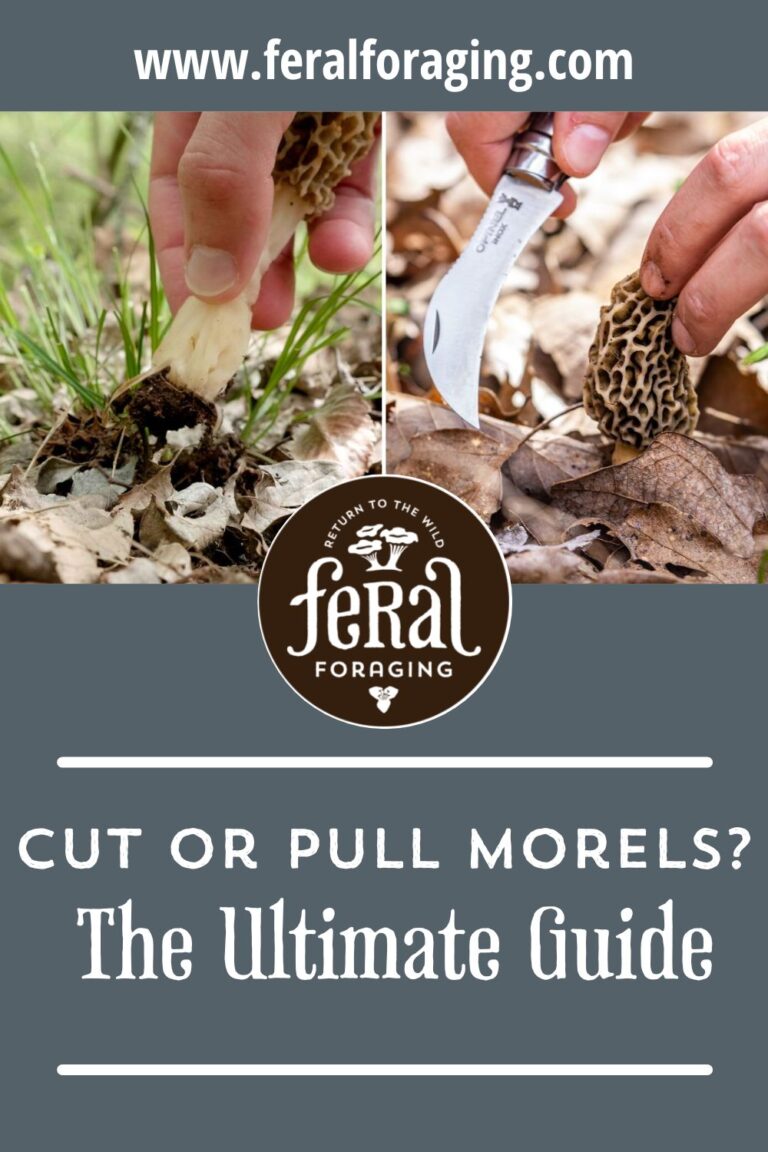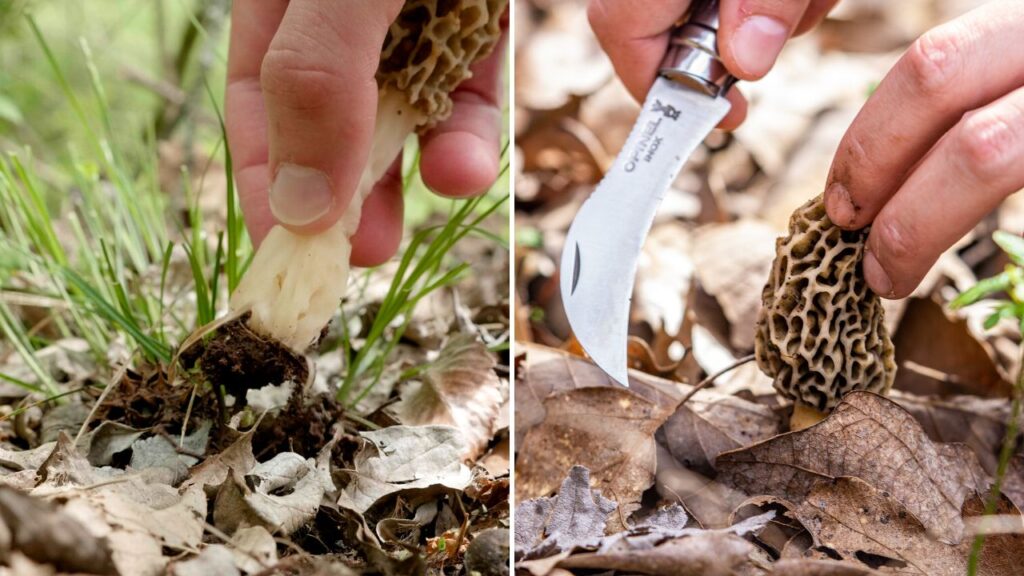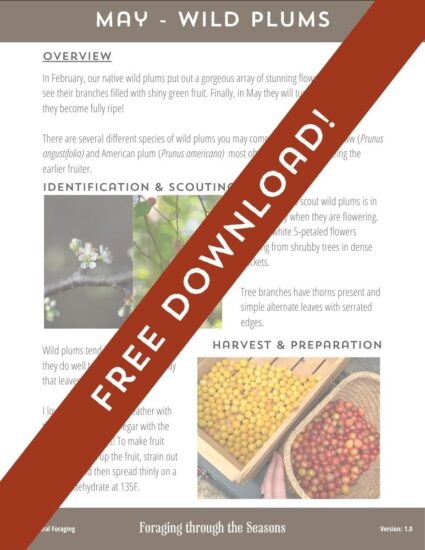What is the correct way to pick a morel mushroom?
Morels are prized edible fungi, sought after by foragers and gourmet chefs alike for their unique flavor and texture. But when it comes to harvesting morels, there is a contentious debate over whether it is better to cut or pull them from the ground. In this article, we will explore the arguments for and against cutting or pulling morels. We will use scientific studies to back or reject these claims and make sure that we are taking into account the actual biology of morels that underlies this debate!
Biology of Morels
Before we delve into the debate itself, it’s important to understand the biology of morels as it will be referenced at later points in the article. Morels are a type of fungi that belong to the Ascomycota division. They are characterized by their distinctive cone-shaped cap, which is covered in deep ridges and pits.
Morels are also known to have a structure called a rhizomorph which not all fungi have. A rhizomorph [1] is a dense mycelial nutrient transport structure that can be attached to a fruiting body. They may connect a morel mushroom to nutrient storage structures such as sclerotia (hardened mycelium mass) or muffs (dense mycorrhizal-like connections to fruiting bodies).
These structures play an important role in the growth and development of morels, and their presence has implications for the debate over cutting or pulling morels.

Is it better to cut or pull morels?
If you prefer to learn by watching videos (like me) you can see our video which covers this topic in depth below!
Arguments that it does not matter
Some argue that it doesn’t matter whether you cut or pull morels when harvesting them.
Two studies are often cited in support of this argument.
The first study often cited is a long-term study (Mushroom picking does not impair future harvests – results of a long-term study in Switzerland) of many unnamed species that suggest that the harvest of fungi either by picking or pulling has no effect on population health [2]. While this study is good overall, we don’t know what actual species are involved in this study so it may not have included morels at all.
The next is a study on chanterelles specifically (The Chanterelle (Cantharellus cibarius): A Peek at Productivity), which found that picking chanterelles has no major effect on population health [3]. This is often seen as a smoking gun for the “it does not matter argument”.
However, it is important to note that chanterelles and morels are in completely different divisions of fungi, and it may not be appropriate to generalize the results of the chanterelle study to morels. They are as related to each other as apples and pinecones in the plant kingdom. I don’t see us using pine as a model for apple physiology anytime soon. Is there a physiological difference between morels and chanterelles that would warrant us looking further? There is. Morels contain sclerotia and “mycelial muffs” while chanterelles do not. This leads us to the next question.
Should you cut morels?
One argument in favor of cutting morels is because they contain a rhizomorph (defined above) which is connects the morel to a sclerotium or mycelial muff. Pulling a morel could damage this structure and potentially impact the morel’s health overall.
However, in a study on rhizomorphs in morels, it was found that rhizomorphs quickly taper off and disappear as a morel fruiting body matures [4]. This suggests that the presence of rhizomorphs may not be as important as previously thought. If that is the case, it may not be that detrimental to pull morels after all.

Should you pull morels?
On the other hand, some argue that pulling morels is actually the better option. The theory is that if you cut a morel or pinch at the base then you’ll leave behind a short stump that will get infected and damage the mycelium below [5]. This is written in Britt A Bunyards, “Settling the debate over cutting vs. Picking, and the sustainability of wild mushroom collecting”.
However, there are no studies that back this claim, and it remains a matter of conjecture. I personally find this argument hard to believe. There are likely thousands of morels that are never found each year and thus die away and rot as temperatures rise. It would seem a natural part of the life cycle of a morel for this type of rotting to occur.
Once again, we are left without any conclusive evidence as to the correct course of action for picking morels: cut, pull, or it doesn’t matter. What are we to do?
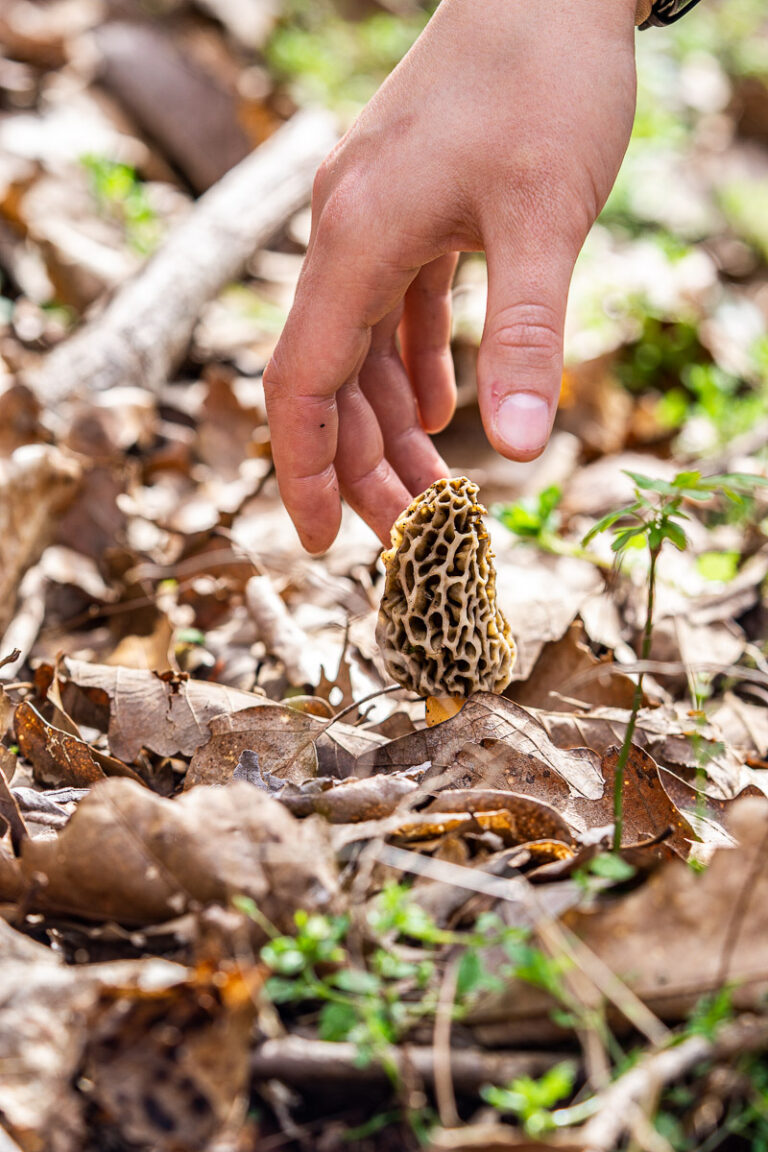
The definitive answer to how to harvest morels
Unfortunately, based on the current information that is available, there is not one! In the absence of a definitive answer to the question: “Should you cut or pull morels?” I lean on the recommendation from the USDA in their guide, Ecology and management of morels harvested from the forests of western North America [6]. It states:
“Cutting them in place does not disrupt the mycelium like plucking does. Especially when morel bases are attached to long tapered mycelial masses, such as those described by Buscot and Roux (1987) [4] and Stamets (2005), leaving this mass in place is likely a good idea. How harmful such mycelial disruption truly is to morel colonies is simply not known, but it makes sense to err on the cautious side because cutting has other benefits. Cutting morels in place prevents additional handling and keeps the morels cleaner. Additionally, morels can have primordia (not-yet-expanded morel “buttons”) attached to their base. Left in place, these primordia have the potential to grow into harvestable morels if fruiting conditions remain favorable. In any case, there is no reason to believe that cutting morels does more harm than pulling, so given the practical reasons for cutting, the practice might as well be encouraged” [6]
I generally agree with the above statement, and this is my personal practice.
One thing is definitive, though. We do not need to keep yelling at others for not harvesting morels the way that we think is right. At the end of the day, nobody knows for sure. We all care about morels. We are on the same team.
If you are interested in where to find morels, you might find our article on Morel Tree Associations useful as well!
I hope you have found this article helpful. Happy hunting!
Sources
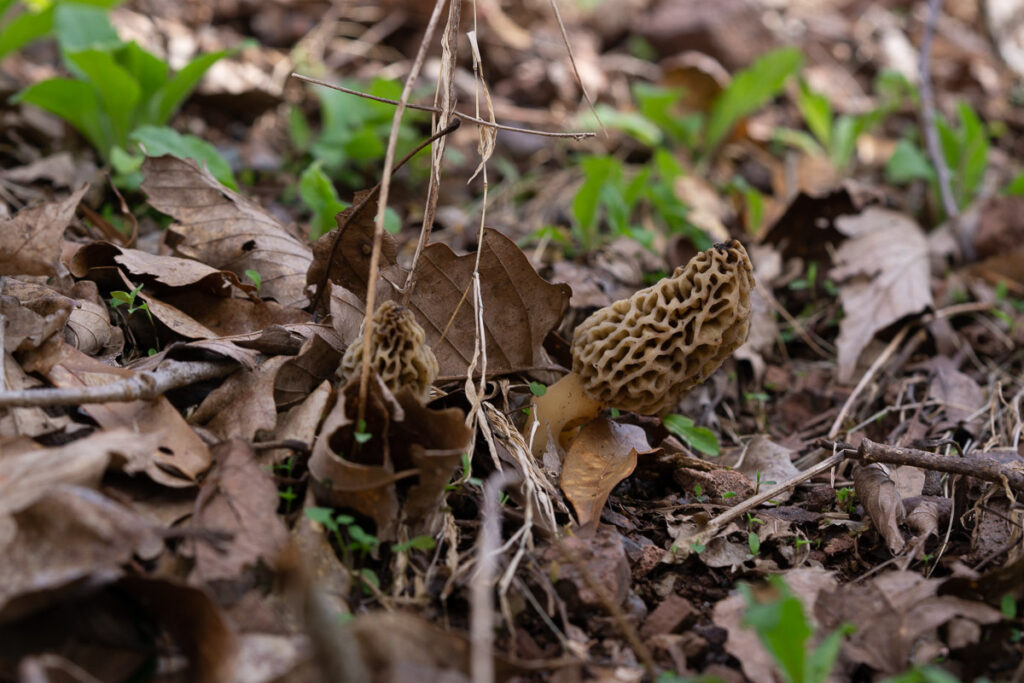
- Wikipedia – Mycelial cord
- Mushroom picking does not impair future harvests – results of a long-term study in Switzerland
- The Chanterelle (Cantharellus cibarius): A Peek at Productivity
- Field observations on growth and development of Morchella rotunda and Mitrophora semilibera in relation to forest soil temperature
- Settling the debate over cutting vs. Picking, and the sustainability of wild mushroom collecting
- Ecology and management of morels harvested from the forests of western North America
- Mycelium running: How mushrooms can help save the world
